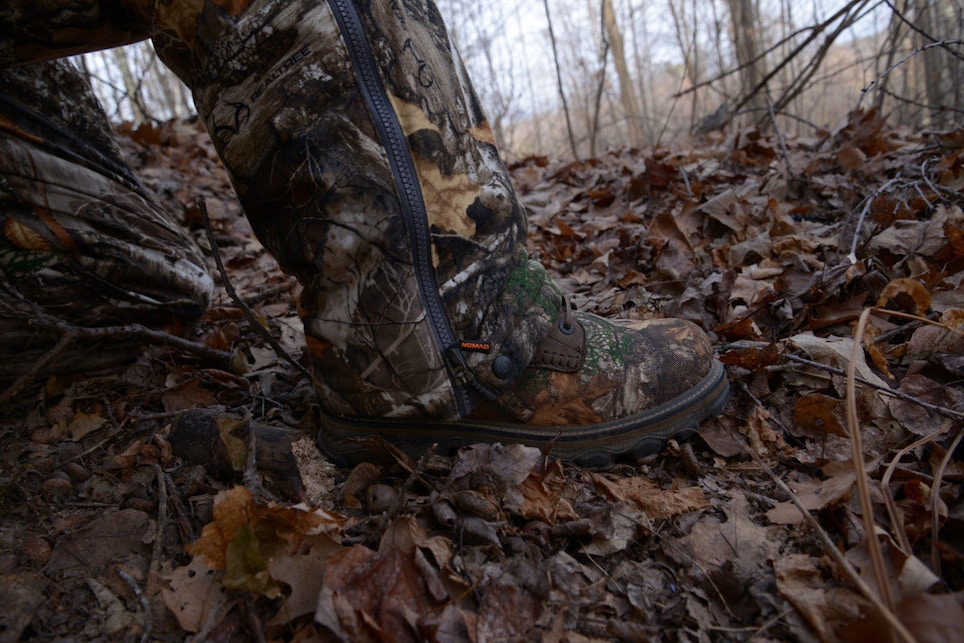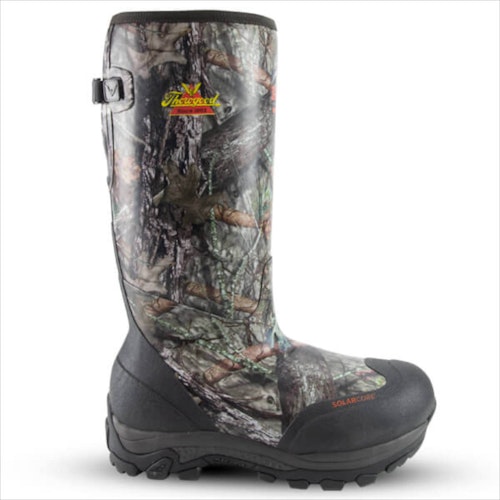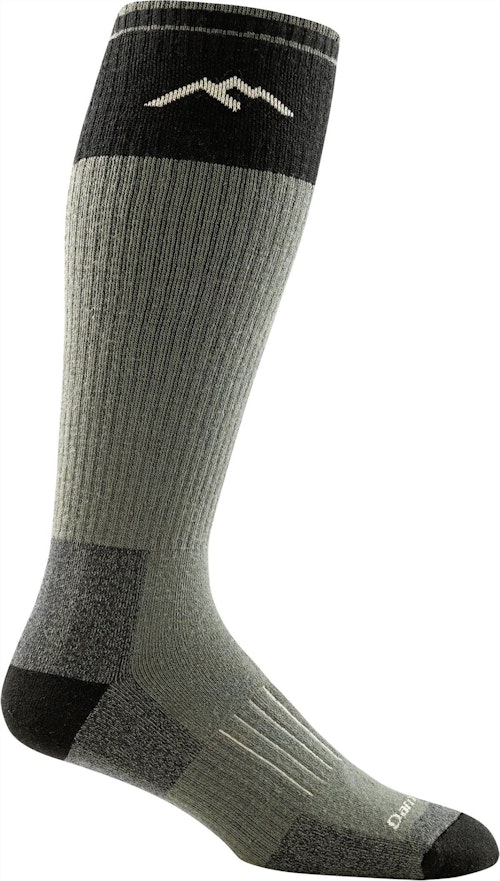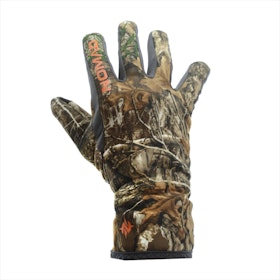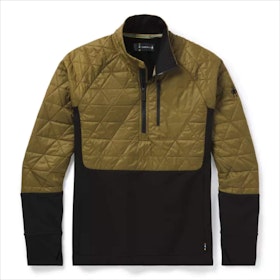Once my feet get cold, I’m done.
I think I’ve heard most people I deer hunt with say that at one time or another.
When it gets legitimately cold and long hours on stand are in the forecast, good boots and equally good socks form the foundation for staying warm.
I hunt primarily in Northern Wisconsin, and I spend a lot of time in the woods from October through December. Without good gear, it’s impossible to stay comfortable afield. And forget about an all-day sit in late November if you’re not fully equipped for the cold.
The challenge of stocking a small but well-curated selection of cold-weather apparel is making sure that everything is effective and versatile, and that takes knowledge beyond the manufacturer’s product description. It isn’t practical to fully test all the gear you sell. I didn’t test every piece of cold-weather gear on the market for this story either, but I can share some real experience from my time afield with this gear.
Last month I took a look at jackets, bibs and one standout mid-layer. Now it’s time for some boots, socks, gloves and base layers.
Happy Feet
Most people can only sit as long as they can keep their feet warm. I’m no different, but it was never a limiting factor this year. Between socks from Darn Tough and boots from both Rocky and Thorogood, my feet enjoyed their most comfortable season of hunting.
There’s a lot of swamp in my hunting country, so I spend a lot of time in rubber boots. For the past several years that’s been a pair of Rocky boots, the specific model of which I’m no longer sure. In warmer weather, I’ve also gotten more life than anyone deserves out of a pair of uninsulated Lacrosse rubber boots. But the story here is cold. And Thorogood is my new standard.
The Thorogood Infinity FD rubber boots hold 1,600 grams of Thinsulate and feature a Solarcore lining in the toecap and foot bed. Solarcore is an aerogel lining that Thorogood says has been tested to retain 50% more heat. I can’t verify percentages but I can tell you these boots are warm.
The general feel is substantial without being clunky. The foot bed is comfortable and a composite shank provides the right amount of stiffness in the sole. The ankle opening is big enough that pulling the boots off isn’t a struggle, but not so open that they feel boxy or sloppy.
On the coldest days I wore these boots with a pair of Darn Tough over-the-calf Hunter socks and my feet were as warm as they’ve ever been in rubber boots. I should note that while my standard size was comfortable with very light socks, I had to size up to comfortably wear thicker socks.
These boots are on the heavy side and wouldn’t be my choice for covering a lot of ground, but that’s not really the point of a boot like this. I stayed dry moving through the swamp and warm on stand. That’s the point.
The Rocky Mountain Stalker boots filled a different role for me. They’re warm and waterproof in their own right, but they’re not a slosh-through-the-swamp kind of boot.
As soon as I pulled the first boot from the box I was surprised by how light it was. I tried them on with a pair of thinner wool-blend socks and initially thought I might need a half size larger, but once I did a little walking in them I was impressed with the fit and comfort. And I was able to wear thicker socks once they loosened up a little.
They have a moderately stiff sole thanks to a fiberglass shank with a lightweight EVA midsole. Uppers are made of full-grain leather and 1,200-denier nylon. They are fully waterproof, with 1,000 grams of Thinsulate Ultra to keep feet warm. The lace-locking system is another nice feature. I always have to double-knot my other boots, but the Mountain Stalkers stayed tight with a single knot every time.
Right out of the box they were comfortable to walk in. My first real day in the field with these boots involved a fairly significant hike up a bluff in Southern Wisconsin, but they were familiar to my foot — thanks to the memory foam foot bed, I assume — and I never felt any hotspots. I continued wearing the boots throughout Wisconsin’s deer seasons — bow, gun, blackpowder, special antlerless seasons in December, late bow — and was comfortable in pretty much every scenario.
I figured this would be a good pair of boots, but I was surprised by how much I liked them. They’re not ideal for swamp work, but they got it done pretty much everywhere else. If 35 degrees is cold in your area, these are all the boots your customers will need. If not, Rocky also makes a 1,400-gram version of the Mountain Stalker.
Socks
I’m kind of a sock guy. I get cold feet but I don’t like to come in, so I’m always looking for better socks and sock combinations. Smartwool, Under Armour, Carhartt, Wigwam — I own plenty. And Darn Tough stacks up.
The company sent me four pairs, Paul Bunyan over-the-calf and three versions of the Hunter socks: over-the-calf, boot and micro crew.
When Darn Tough says these socks are fully cushioned, they’re not overselling. They almost felt more like a piece of gear than just a sock. And they perform.
In the way that a really good mid layer feels like it can be worn as a shirt or a jacket equally well, the Darn Tough socks have more of a built-for-weather feel in combination with a soft interior and comfortable fit. There’s just more to them. They’re heavier without being thicker. It feels like you’re already wearing a protective layer when you slide them into your boots.
The heaviest socks Darn Tough sent, the over-the-calf Hunters, didn’t fit comfortably in the Rocky boots, but pairing them with the Thorogoods provided an extremely warm and comfortable combination. The Paul Bunyans quickly became my sock of choice in the Mountain Stalkers.
The micro crew and boot versions of the Hunters were nice too, but in cold weather I’m partial to over-the-calf socks. They just stay up better.
All those other socks still have a place in my drawer, but now these do too. I wore the Paul Bunyans obsessively all winter long, and I’ve already recommended them to people.
Gloves
Much like feet, cold hands can ruin an outing, but they’re a little easier to deal with. I always use hand warmers, for one. And you can take off gloves and tuck hands into a pocket or under your arms if need be, but it’s nice when there isn’t need.
The ScentLok BE:1 Fortress gloves are part of the complete BE:1 Fortress system and fit nicely with the Fortress Parka. These are good gloves to be sure, but for me personally, no gloves can keep my hands warm on their own if I’m sitting for hours when it’s below freezing. That’s why I always use hand warmers.
Proper gloves are a still a necessity, however, and the Fortress gloves are a great option. They were comfortable and performed well on several hunts, even for someone who always gets cold hands. They allow a decent amount of finger dexterity in a fairly substantial glove. They’re windproof and waterproof, with 60 grams of Thinsulate and a leather palm for good grip. And of course they feature ScentLok’s Carbon Alloy scent control technology.
Nomad supplied my other pair of test gloves. The Harvester gloves are considerably lighter than the Fortress gloves, with a slightly stretchy feel and soft high-pile interior that’s warm and comfortable.
These gloves are not made to sit long hours in the cold, but I really liked them when I was walking. I was comfortable handling a gun and even a crossbow while wearing them. And they’re touchscreen compatible, which made pulling up the weather report or my OnX app a breeze.
Long after the hunting seasons ended, I found myself still wearing these gloves in my truck and for a number of other tasks. They’re comfortable and versatile, if not absolute protection from the cold.
Back to Base
Good base layers are key for the cold-weather hunter. Smartwool provides some good options.
I tested the IntraKnit 200 Pattern crew and bottom. Both pieces feature body-mapped mesh ventilation knit seamlessly into a quick-drying merino/polyester blend, with extra flex in the elbows in knees. The result is a slim-fitting, custom sort of feel, minus the compression factor that can make some garments uncomfortable.
These base layers are made for active cold-weather pursuits. They’re warm enough to wear under your bibs or whatever you wear on stand — I liked them under the Nomad Connifer bibs — but they’re made to move. The lack of bulk, combined with the flex zones and ventilation, make then ideal for hunting on foot. Cover some ground, stop for a while to glass and wait, and never worry about getting sweaty and then freezing.
I would have preferred a more fitted cuff on the sleeves, and the waistband on the bottoms seemed heavier than necessary, but I really liked both pieces. They’re versatile and comfortable and I kept wearing them all winter.
Another Surprise
I mentioned in the first story about jackets and bibs that the Smartwool SmartLoft 60 Hybrid Half Zip was my surprise of the lot. The Smartwool balaclava was another pleasant surprise.
On cold days I like having something around my neck and something thin under my hat, but I have never worn a proper balaclava that I found comfortable. They’re always too tight around my neck, or too bulky to be comfortable in my jacket. The Smartwool tackles both issues, and it fits comfortably under a hat. It’s also warm. This will be part of my regular deer hunting attire until it’s lost or destroyed. And then I’ll buy another.
I also wore it fat biking, snowshoeing and ice fishing over the winter, because it’s versatile and comfortable. It’s another item that would bring me out of my way to go back to the store where I found it.
Out the Door
None of these products are the only solution. They’re options, and I’d say they’re all good options. While there’s plenty of other gear you could and should consider stocking, you can be sure customers will appreciate the varied features and capabilities of the items covered here.
Quality and versatility go a long way in moving product out the door, and that’s a good start.
